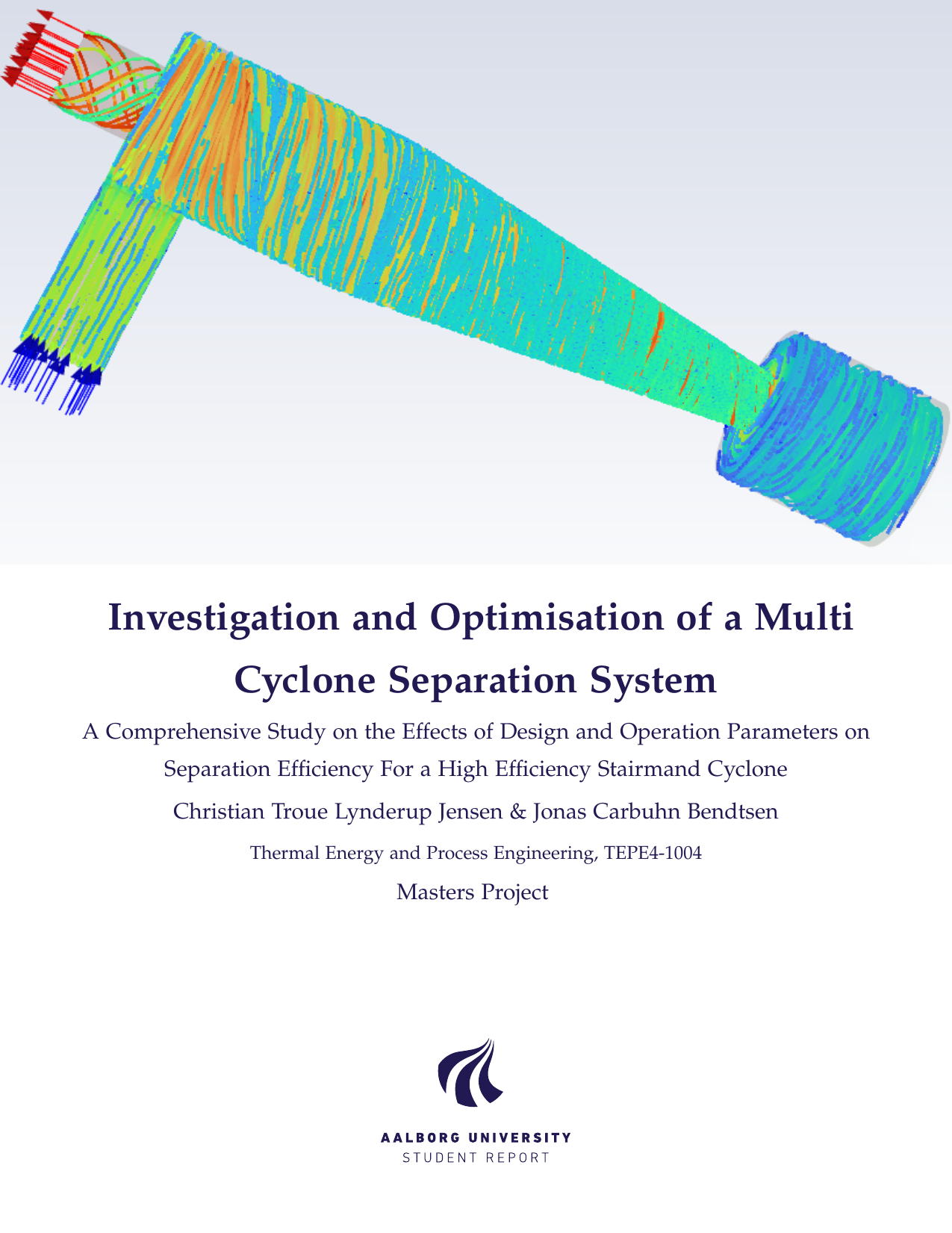
Investigation and Optimisation of a Multi Cyclone Separation System: A Comprehensive Study on the Effects of Design and Operation Parameters on Separation Efficiency For a High Efficiency Stairmand Cyclone
Translated title
Investigation and Optimisation of a Multi Cyclone Separation System
Term
4. term
Education
Publication year
2024
Submitted on
2024-05-28
Pages
87
Abstract
Filtration systems help mitigate health hazards by removing harmful particles from the air. This report investigates the performance of a High Efficiency Stairmand cyclone separator, how varying diameters, outlet designs and inlet velocities, affect backflow, pressure loss, and separation efficiency. It was found that a bend on the outlet did not prevent backflow or significantly change separation efficiency, but merely increased the pressure loss. An decrease in vortex finder diameter showed to limit the backflow and increase the overall efficiency, but did not significantly change the fishhook and came at the cost of increased pressure loss. Additionally, modifying the cyclone diameter reveals that larger cyclones with lower inlet velocities in some cases can increase separation efficiency due to the fishhook effects, but reduced separation efficiency for larger particles. Conversely, smaller cyclones shows higher separation efficiency for larger particles but lower efficiency for fine particles. It was hypothesised that a series of cyclones with different design parameters can optimize overall separation efficiency and pressure loss by utilizing overlapping of the efficiency. This led to a design of a system consisting of one large and two small cyclones, with a minimum separation efficiency of 86.5% across particle diameters of 1-20 microns,.
Keywords
Documents
